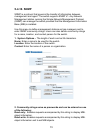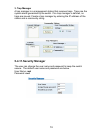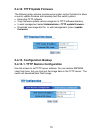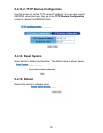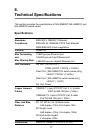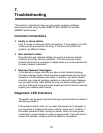
79
7.
Troubleshooting
This section is intended to help you solve some common problems
encountered while using the MIL-SM801P, MIL-SMS801G, and MIL-
SM800P switch series.
Incorrect connections
Faulty or loose cables
Look for loose or obviously faulty connections. If they appear to be OK,
make sure the connections are snug. If that does not correct the
problem, try different cables.
Non-standard cables
Non-standard and miswired cables may cause numerous network
collisions and other network problems. This can seriously impair
network performance. A category 5 cable tester is a recommended tool
for every network installation.
Improper Network Topologies
It is important to make sure that you have a valid network topology.
Common topology faults include excessive cable length and too many
repeaters or hubs between end nodes. In addition, you should make
sure that your network topology contains no data path loops. Between
any two ends nodes,
there should be only one active cabling path at
any time. Data path loops will cause broadcast storms that will severely
impact your network performance.
Diagnostic LED Indicators
The switch can be easily monitored through panel indicators to assist in
identifying problems.
If the power indicator does turn on when the power cord is plugged in,
you may have a problem with power outlet or power cord. However, if
the switch powers off after running for awhile, check for loose power
connections, power losses or surges at power outlet. If you still cannot
resolve the problem, contact your local dealer for assistance.







